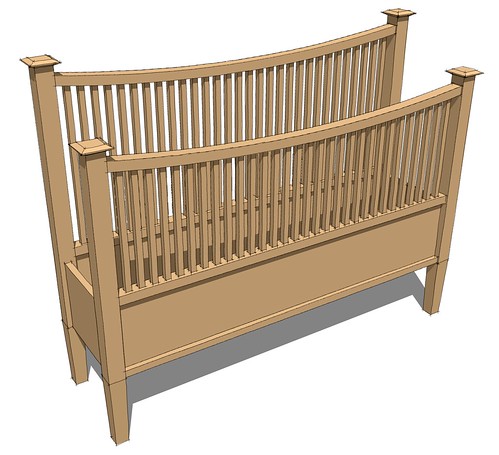SketchUp Guru
Established Member

I drew this up this morning mostly to practice my SketchUp skills. It's based on a design from 1907. What do you think?
The 3/4-inch-square spindles are to be mortised into the rails. How would you cut the mortises in the top rails so that it was relatively fast and accurate? I have some ideas but I thought this might get a bit of discussion going.
By the way, the bed isn't short. It's just really wide. :lol:




































